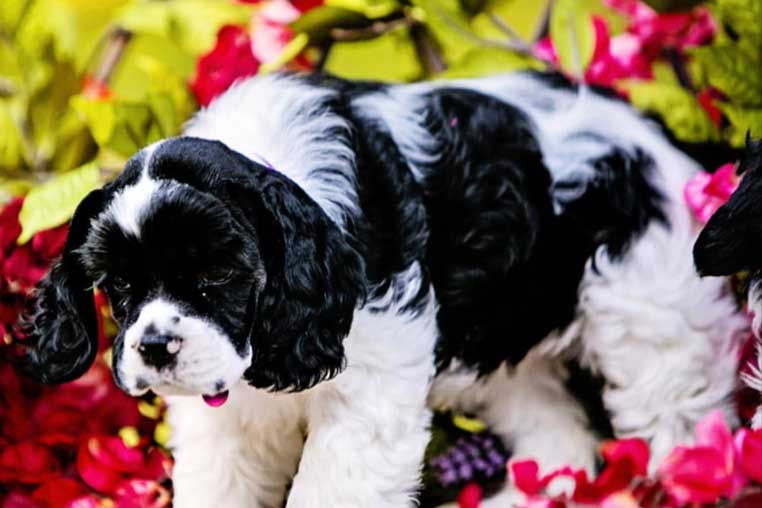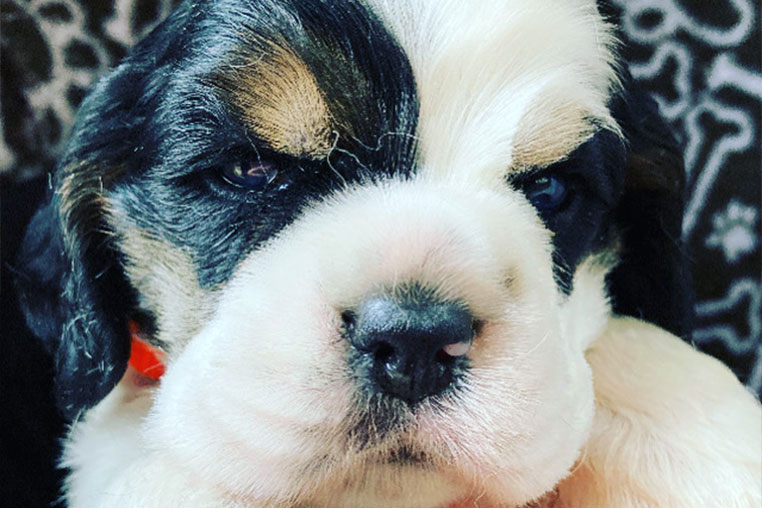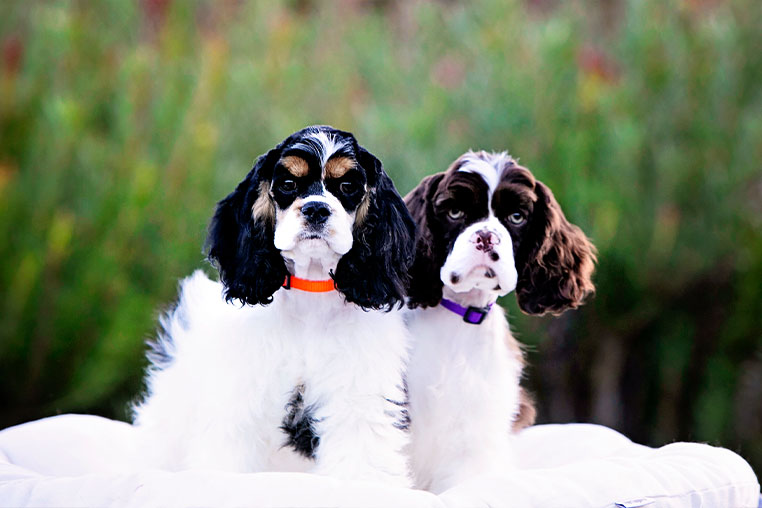Cocker spaniel is one of the most friendliest and unique dog breeds. They are special and your best companion. Cocker spaniels are always alert, curious, and have a keen eye for adventure. They are full of personality, and you are going to love them for it.
Surely, you care about your dog and want to take good care of it. So, you should know that cocker spaniels are known for their eyes, and they are related to their fair share of problems. The gene that makes them so alike also passes on inherited issues.
Responsible breeders of cocker spaniel are susceptible to eye issues and work to eradicate them.
Do Cocker Spaniels have More Eye Problems than Other Breeds?
Cocker Spaniels are overrepresented in terms of eye problems. If you are considering getting a cocker spaniel into your life, or have one already, you are likely to become acquainted with a veterinary ophthalmologist at some point.
Like humans, if your cocker spaniel’s eye feels itchy or vision is blurry, he/she can’t tell you. Unfortunately, the breed is inclined to develop different eye diseases. However, reputable breeders are working to reduce eye problems. So, it can be expected that in time to come most of the eye problems in this breed will be eliminated.
What are the Common Cocker Spaniel Eye Problems?
There are many eye disorders that your cocker spaniel might develop. Let’s take look at the most common ones.
-
Cataract
Like any other breed, one of the most common eye problems is cataracts. The problem develops as they age. It is caused by the lens becoming largely opaque over time until the whole lens is covered in a cloudy and gray film.
Based on the severity, it might affect the eyesight of your puppy. In fact, it might eventually lead to blindness. Some of the signs and symptoms of cataracts in cocker spaniels are,

- Irritation
- Cloudy eyes
- Eye inflammation
- Adopting new habits because of sight loss
Sure, medications can help in reducing eye inflammation, but cataracts can only be fixed with surgery. Corrective surgery is needed to repair the damage.
Just make sure that you don’t make them go around wearing oversized sunglasses as he might be bullied by the other dogs in the neighborhood.
What’s good is a majority of the cataract issues are small and just partially affect your cocker spaniel.
However, if cataract develops due to diabetes, they might cover rapidly and cover the whole lens.
-
Prolapsed Third Eyelid Gland
Prolapsed Third Eyelid Gland is also known as ‘cherry eye’. The gland is one of two tear glands present around each eye in dogs. A prolapse might occur due to weakness of the connective tissue holding the gland in place.
Cherry eye is a common eye disorder in cockers. It can be repaired surgically with the help of nip and tuck. Previously, treatment of PTEG meant surgery to get rid of the third eyelid that is turned inside out. Nevertheless, due to the decrease in tear production caused by the removal of the third eyelid, ophthalmologists tuck the eyelid back in place to restore function. It isn’t painful and is unsightly. In case it is left untreated, it might lead to infection and inflammation. Many dogs need cosmetic surgery now and then. So, there is no shame if your cocker spaniel gets nip and tuck.
-
Dry Eye Syndrome
When we humans have dry eyes, we just put a few drops in the eyes and carry on without any hitches. But when cocker spaniels get dry eye, they can’t jog to a drugstore to get their eye drops.
Tears play a crucial role in keeping your dog’s eye health. They cover their cornea and wash about infectious agents and debris. Also, tears have germ-fighting properties. If the eye’s tear film doesn’t contain enough tears, the cocker spaniel develops the condition called ‘dry eye’. It can lead to many chronic eye infections.

Cocker spaniels with this condition have red eyes due to irritation and thick mucoid discharge. They might squint often and blink excessively. At times, dogs keep their eyes closed when they develop dry eye syndrome.
The dry eye shows up in cocker spaniels that are 4-6 years old. However, it might happen at any age. Doctors perform a Schirmer tear test for diagnosing dry eye.
Treatment primarily focuses on their quality of life and ensuring that the dog is not in pain. If dry eye in a dog is detected and treated early, the animal has a higher possibility of maintaining eye comfort and vision. In case medical therapy isn’t effective, doctors might perform a surgical procedure.
But make sure that you see a veterinarian right away if your cocker spaniel has a discharge or red eyes.
-
Eye Infection
There are ample reasons why your cocker spaniel might develop an eye infection. However, eye infection in dogs ranges from uncomfortable to painful. There are various types of eye infections that might cause your dog to experience discomfort, sensitivity to light, and redness.
Some of the most common types of eye infections are,
- Inflammation of the cornea
- Physical abnormalities of the eyelid
- Uveitis
The causes of the types of infections vary from one cocker spaniel to another. In case your dog is diagnosed with one of the above types of eye infections, the following might be the reason behind it.
- Fungus spores
- Viruses
- Bacteria
- Parasites
- Trauma
- Allergens or irritants
- Foreign matter
- Cut or scratch on the cornea
In case your dog is having an eye infection, he/she will display the following symptoms:
- Swelling around the eye
- Redness of the eye
- Smelly and thick discharge
- Tearing or watery discharge
- Holding eye close
- Blinking or squinting
- Rubbing the eye
- Sensitivity to light
The treatment will depend on the underlying cause of the cocker spaniel’s discomfort. It might be a combination of oral and topical medication, such as anti-inflammatory or antibiotics drugs. However, in some cases, the dog might require surgery.
-
Glaucoma

Like humans, dogs can develop glaucoma. It happens due to an imbalance in the production and drainage of eye fluid, leading to fluid buildup increasing eye pressure to unhealthy levels. This can cause damage to the optic nerve and retina. It might lead to blindness.
Glaucoma pain is more severe in dogs than in humans. Nevertheless, dogs don’t show pain like humans. So, it might be difficult to detect when they are hurting. Some of the signs and symptoms you can look out for are:
- Squinting
- Eye pain
- Tearing
- Redness of the eye
- Weak blink response
- Avoidance of light
- Bulging swollen eye
- Fluttering eyelid
- Cloudy cornea
- Vision issues
- The appearance of vessels in the white section of the eyes
- Avoidance of light
Time is one of the most crucial factors when it comes to treating glaucoma. This is the reason you should visit a veterinarian as soon as your cocker spaniel shows symptoms.
Treatment is primarily dependent on the severity of it, including the underlying cause. Doctors might suggest:
- Medication
- Surgery
- Cyclocryotherapy
However, you should know that there is no cure for glaucoma in dogs, but there are ways to treat and manage the condition. But if it is secondary glaucoma, it might be cured.
-
Progressive Retinal Atrophy
Atrophy means complete or partial wasting of a part of the body. Progressive Retinal Atrophy is a group of degenerative diseases, which might affect the photoreceptor cells. Your cocker spaniel might have inherited form or early-onset form of Progressive Retinal Atrophy. With this disease, the cells tend to deteriorate over time. So, eventually, it can cause blindness.
With this eye problem, the photoreceptor cells in the retina of the cocker spaniel develop abnormally. Thus, it leads to the early onset of blindness. Generally, both the cones and rods are affected. When PRA onsets late, the retina cells develop normally, and with time, the cells tend to deteriorate.

It is not a painful condition. Hence, it is hardly noticed in the early stages of development. Usually, the first sign that is noticed is night blindness. The affected dog might be nervous and reluctant to go out during the night. Cocker spaniel owners have seen that when they develop PRA, the eyes tend to become reflective as light shines on them.
Unfortunately, no treatment of this condition is available yet to prevent or cure progressive retinal atrophy. Several vitamin therapies are recommended, but there is no evidence to suggest that the vitamins have an effect.
-
Eyelashes: Distichiasis
The beautiful eyelashes of cocker spaniel might be a source of an issue if the dog suffers from Distichiasis. The direction of the eyelashes grows, and they might touch the surface of the eyeball. Thus, dogs might suffer from various conditions, including abrasions, ulcers, eye tissue infection, and abrasions.
It can be diagnosed through an eye examination. Conservative management includes keeping the eye lubricated or even removing that portion of the eyelid leading to the problem. Doctors might also suggest Canine Electro epilation. It destroys the follicles that lead to the issue.
-
Conjunctivitis
As the eye’s mucous membrane gets inflamed, conjunctivitis might happen. There are different things that can lead to inflammation of the eye’s conjunctivae. Things, such as pollen, dusk, distemper, airborne irritants, and other viral diseases might lead to conjunctivitis. Usually, an antibiotic ointment is prescribed for the condition. In case antibiotics don’t help, it can be a Staph infection. But what’s great is the prognosis is good in this case.
Make sure that you monitor the cocker spaniel’s reaction, behavior, and outward appearance. In case you know what is normal, you can be prepared when things are out of the ordinary.
Tips to Take Care of Your Cocker Spaniel’s Eyes
Here are some tips that can keep your cocker spaniel’s eye in good shape.

- Eye Stain Wipes: Several dogs, including cocker spaniel, tend to get tear stains. For cleaning the stains, you can get tear stain wipes. Further, read this guide to know the causes and remedies of Cocker Spaniel tear stains.
- Saline Eye Rinse: Keep a flush or rinse on hand and a first aid kit. In case the dog’s eye requires to be flushed, you can use a simple saline solution.
- Get Dog Eyewear: To protect your furry friend’s eyes from wind, UV rays, debris, and other elements, get eyewear for dogs. For instance, you can get a goggle for your cocker spaniel.
- Use a separate cotton ball to clean their eyes. This prevents infection from spreading from one eye to the other.
- Since Cocker Spaniels are prone to develop eye problems, you should clean your Cocker Spaniel eyes. You should also take them to a veterinarian for eye checkups regularly.
Things to Lookout for In Your Cocker Spaniel’s Eye
As you already know, if your dog’s eyes are itchy or their vision is blurry, they won’t be able to tell you. So, here are some signs you need to look out for in your cocker spaniel.
- Check if their eyes are frequently bloodshot, appear swollen, or bulging. Make sure that you do not use eye medications for humans. Get them examined as soon as you can.
- Even though it is quite tempting, it is not in their best interest to let them hang their head out of the window while they ride in a car. This is because debris, dirt, and fragments can fly into the Rover’s eyes as they travel.
- Check if the eyelid appears to be turned outward or inward. Do not try to fix the problems by yourself as it can do more damage.
- A cloudy or bluing of the eye might be a symptom of glaucoma. So, make sure you visit a vet.
- Any kind of formation or growth needs immediate attention.
Bottom Line
Not many things have as dramatic an effect on your cocker spaniel’s quality of life as the proper functioning of eyes. What’s unfortunate is cocker spaniels can develop various eye conditions. Some of these conditions might also lead to blindness if it isn’t treated at the right time. At times, the conditions can also be painful. So, if you notice is any signs or symptoms, make sure you immediately take them to a vet, it is also recommended to have a pet insurance in order to cut extra cost.

Leave A Comment